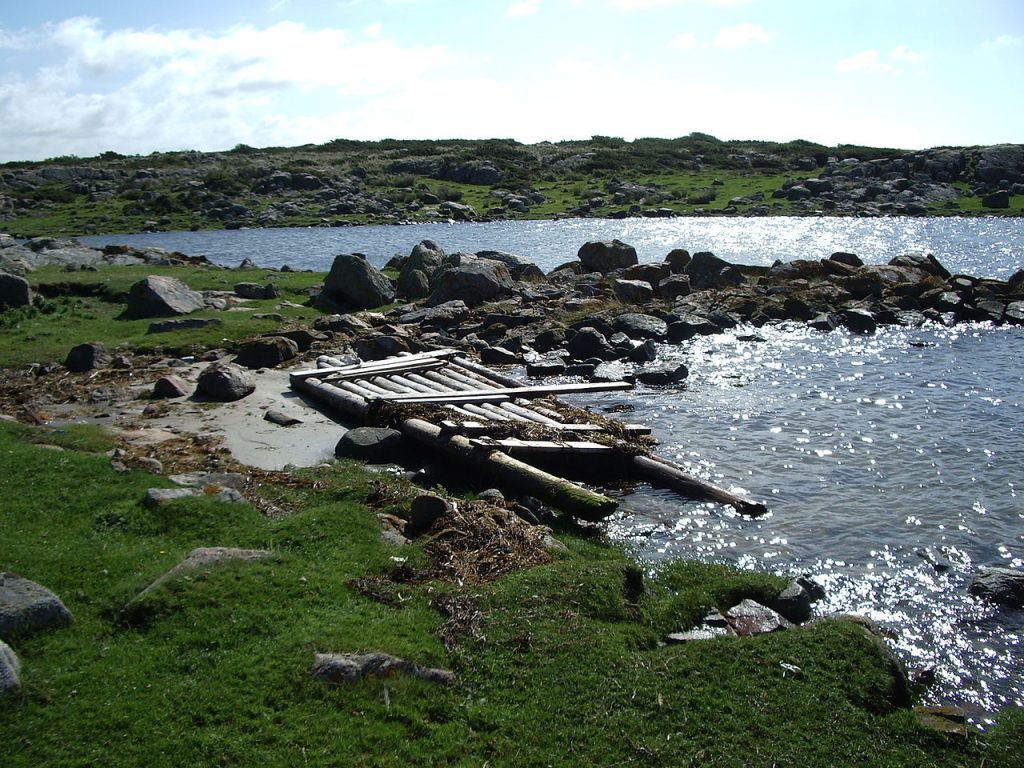The New Year is traditionally a time for seeing things afresh, letting go of what burdens us and seeking new directions. But to be able to do that successfully we need a combination of a critical perspective on the old and the ability to imagine the new – in other words, provisionality. Provisionality is one of the key principles of the Middle Way. It is a quality that combines the critical capacity to see the limitations of a current belief with the imaginative capacity to be aware of alternative options. Alternative options, like genetic adaptations or alternative tools in a toolbox, enable us to address new and unexpected conditions with appropriate adaptation. In this article, which is adapted from the book I am working on about the Buddha’s Middle Way, I want to explore the way one of the Buddha’s most famous analogies reflects provisionality.
The simile of the raft is given by the Buddha in a discourse to some of his followers, to “show you how the Dhamma [teachings] is similar to a raft, being for the purpose of crossing over, not for the purpose of grasping.”
“Suppose a man in the course of a journey saw a great expanse of water, whose near shore was dangerous and fearful and whose further shore was safe and free from fear, but there was no ferryboat or bridge going to the far shore…. And then the man collected grass, twigs, branches, and leaves and bound them together into a raft, and supported by the raft and making an effort with his hands and feet, he got safely across to the far shore. Then… he might think thus: ‘This raft has been very helpful to me…. Suppose I were to hoist it on my head or load it on my shoulder, and then go wherever I want.’ …. By doing so, would that man be doing what should be done with that raft?”
“No, venerable sir.”
“By doing what would that man be doing what should be done with that raft? … When that man got across and arrived at the far shore, he might think thus: ‘…. Suppose I were to haul it onto the dry land or set it adrift in the water, and then go wherever I want’. …It is by so doing that that man would be doing what should be done with that raft.” (Majjhima Nikaya 22:13-14. trans. Ñanamoli and Bodhi)
The traditional Buddhist interpretation of this simile treats ‘Dhamma’ as ‘Buddhist teaching’ and shows the practical justification of that teaching. It is seen as merely for ‘crossing over’ – that is, for reaching Awakening. However, such an interpretation relies on a discontinuous understanding of ‘Awakening’: is it so clear when we have reached ‘the other side’? It also underestimates the wide applicability of this metaphor, which makes a universal point about the need for provisionality in our beliefs. When a belief – any belief – has fulfilled its purpose in the particular conditions it was held, it is time to let go of it before it becomes a burden to us in new conditions. That this applies to the Buddhist teachings amongst other beliefs, however, is an indicator of their non-absolute nature, and that this metaphor is a Middle Way teaching.
The value of any analogy is that it obliges us to compare different situations that we might otherwise assume to be completely different. It is obvious how useful the raft is for getting across the river, and there is only a small degree of doubt that it would be an unnecessary burden after that crossing is completed. We could bring it along just in case there is another river – but for how long? However, it may be less obvious in the case of beliefs that we have become more deeply attached to: for example a religious teaching we have adhered to all our lives, a dying project or relationship, a misjudged investment, or patterns of speech and manners that cause unnecessary offence in a new country. All of these things are entered into because we have explicit or implicit beliefs about their value and benefit, but that value is also subject to uncertainty and change.
We may continue carrying the raft because of a lack of critical awareness of its ill-adaptedness for the new situation, but also perhaps because of a failure to imagine alternatives. When we arrive at the further bank, we need to be able to imagine ourselves managing without the raft. Perhaps, indeed, there are other items of equipment that would be far more valuable as replacements: a machete for the jungle we will then be entering, or a bag of food supplies. But to take these things we have to leave the raft. The anxiety we might feel about leaving it will need to be relaxed and set aside. Similarly, to be able to enter new territory in any other area of our lives we may have to gently set aside things that we have habitually regarded as indispensable up to that point: reputations, relationships, property, allegiances.
The provisionality of the raft metaphor is built on scepticism, for we would not have the critical perspective to recognise the contingency of the raft if we regarded it as necessary or absolute. As we do not know which beliefs we will need to apply this critical perspective to in advance, it is practically important to maintain a general awareness of uncertainty, of the possibility of ‘unknown unknowns’. We need this in relation to all our beliefs, however basic or embedded they seem to be, and whether they are positive or negative. When we arrive at the further bank we simply need the awareness to ask ourselves a question about whether we will need the raft any more (indicating awareness of its contingency) rather than to assume either that we will need it or that we will not. We may need to ask ourselves that question again and again in different circumstances. That same point is emphasised by a related analogy used in the Pali Canon that describes progress on the path as a sequence of relay chariots, each of which is only required to reach the starting point of the next .
In relation to our cognitive processes, provisionality requires an open feedback loop rather than a closed one. In a closed feedback loop (also known as confirmation bias), we continue to interpret our experience as confirming a belief that then provides a basis for interpreting our experience. If our belief is about the value of the raft for us, that belief continues to be reinforced for us by our experience all the time we are crossing the river. On reaching the other side, however, we may be so habituated to that closed loop that we continue to interpret our environment in terms of the value of the raft. We may then compensate for the unconscious cognitive dissonance this creates by rationalising: “Well, you never know, there could be another river soon, even though it’s not marked on the map”, or “I need to take this raft because it might be abused by criminals”. We might focus on slight possibilities and amplify them, all the time reflecting our own anxiety rather than a sufficiently aware response to the conditions. In an open feedback loop, however, we allow new information from our senses to influence and modify our thinking to adapt to the new situation. Our experience continues to determine our beliefs, but our beliefs do not entirely determine our experience.
This ability to adapt to conditions may sound familiar to anyone who has studied evolution. Of course, evolutionary adaptations take place over a longer period of time and are genetic rather than cognitive or behavioural in nature. Nevertheless, an organism that continues in its old habits and is not sufficiently open to developing new ones is the one that is likely to die out, just as the man who carries the raft may exhaust himself in the jungle and expire before he finishes his journey. The relationship to evolution also does not imply that our provisionality is only made valuable by survival or reproduction. Having provisional options could help to fulfil any of a range of goals, which may involve the fulfilment of our needs at a variety of levels. For example, we may need to cross the river for social fulfilment, for intellectual fulfilment, or through a desire for integrative development.
So, the raft is not just about Buddhism, nor is letting go an end in itself. The question is always whether we have considered with sufficient awareness why we are hanging onto our various rafts, and whether we have considered the alternatives. I hope that if you need to, you are able to leave your old year’s rafts by the shore.
For more about provisionality, please see the Introductory Video.
Picture: Log raft run ashore on the island Hallands Väderö: by M9axpe0900 CCBYSA 3.0

